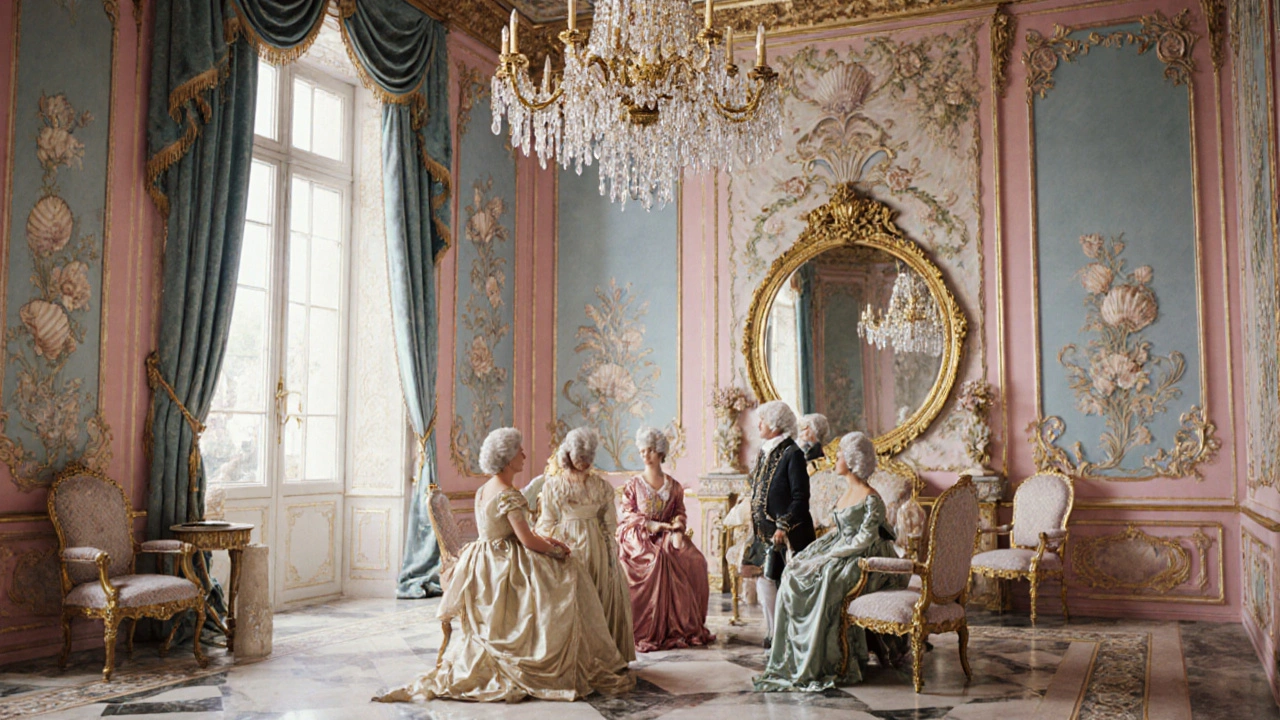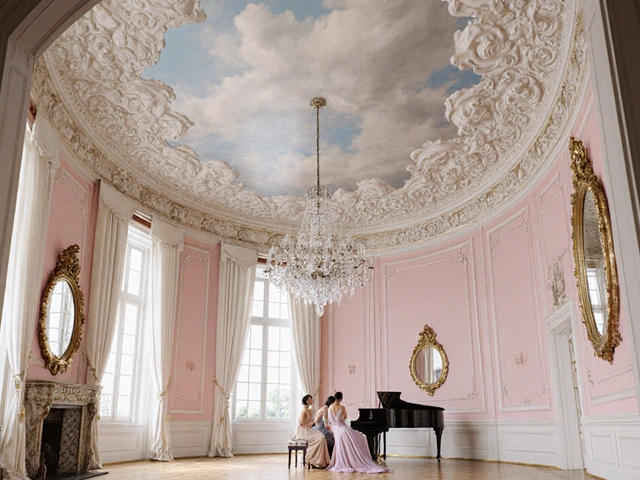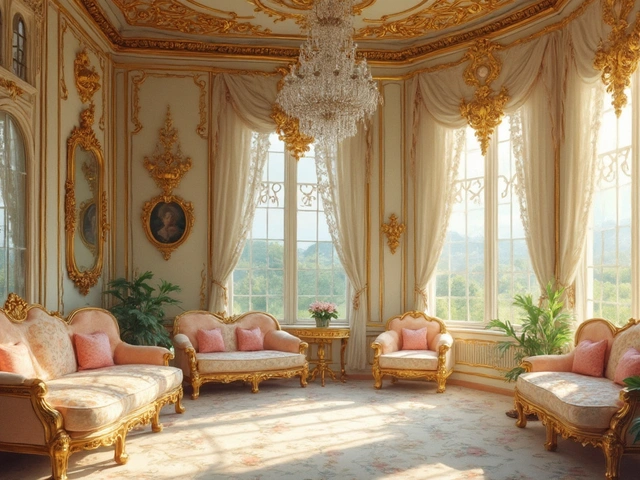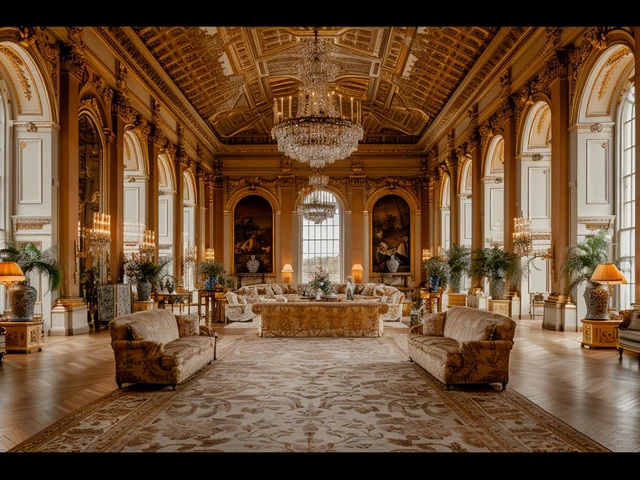Rococo Style Explorer
Discover Rococo Features
Enter a keyword or aspect of Rococo to learn more about its characteristics and historical significance.
Compare Art Movements
See how Rococo differs from Baroque and Neoclassicism in terms of mood, color, and form.
| Aspect | Baroque | Rococo | Neoclassicism |
|---|---|---|---|
| Core Mood | Drama, power, religious awe | Playfulness, intimacy, lightness | Order, rationality, civic virtue |
| Color Palette | Rich reds, deep golds, chiaroscuro | Pastels: pink, sky-blue, ivory | Muted earth tones, white marble |
| Form | Symmetrical, monumental, heavy ornament | Asymmetrical, curvilinear, airy ornament | Straight lines, Greek-Roman columns |
| Typical Subjects | Religious epics, heroic battles | Mythical flirtations, garden parties | Classical history, moral narratives |
Key Takeaways
- Rococo blossomed in mid‑18th‑century France as a reaction to the grandeur of Baroque.
- It is defined by pastel colours, playful themes and irregular, asymmetrical compositions.
- François Boucher, Jean‑Honoré Fragonard and Madame de Pompadour were the movement’s biggest champions.
- Rococo left a lasting mark on interior design, furniture and decorative arts, most famously at the Château de Versailles.
- By the late 1770s the style gave way to Neoclassicism, but its influence resurfaces in modern design trends.
When you hear "Rococo," you probably picture a fluffy, pastel‑filled salon where aristocrats flirt over gilded mirrors. That image isn’t far off, but the style was more than a decorative fad-it was a cultural statement that captured the optimism and excess of France’s pre‑revolutionary elite. This guide walks you through what Rococo really is, why it mattered, who drove it, and how its legacy still pops up in today’s interiors.
What is Rococo?
Rococo is a decorative style that emerged in early 18th‑century France, characterised by light‑hearted motifs, pastel palettes, and fluid, asymmetrical forms. It originated as a reaction against the heavy, dramatic grandeur of the Baroque period, favouring intimacy over monumentality. The term itself derives from the French "rocaille," meaning rock‑like ornamentation reminiscent of shells and grottoes.
Historical Context: From Baroque to the French Court
The late 1600s left Europe with colossal churches, towering columns, and solemn religious narratives-a visual language designed to awe. By the 1720s, the French aristocracy, especially under Louis XV, wanted something softer, more personal, and decidedly less imposing. The shift reflected a broader cultural move toward private leisure, garden parties, and the burgeoning salon culture where ideas were exchanged over music, poetry, and fine confectionery.
Curiosity cabinets filled with exotic shells, pearls, and silk fabrics inspired designers to mimic natural curves. This fascination dovetailed with the rise of the French aristocracy, who commissioned interiors that celebrated pleasure and sensuality rather than piety.
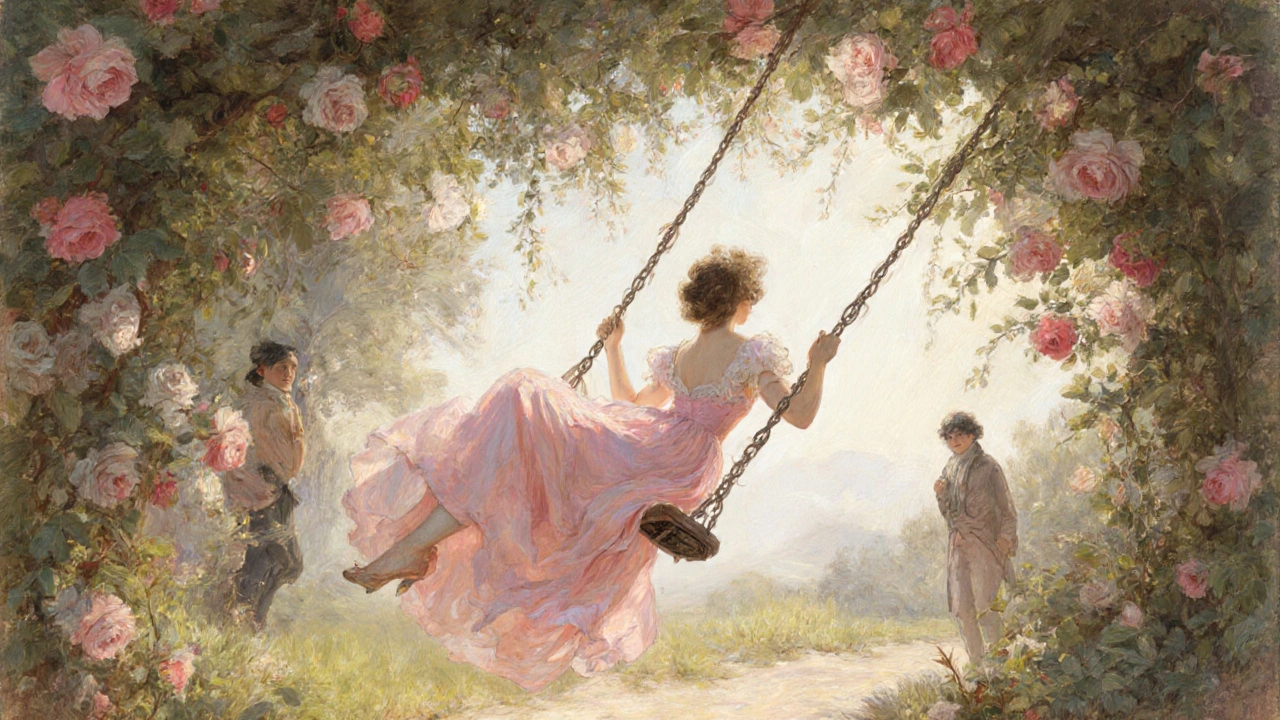
Key Artists and Their Signature Works
The visual vocabulary of Rococo was largely shaped by a handful of painters who turned courtly whims into brushstrokes.
- François Boucher (1703‑1770) - Known for voluptuous nudes and mythological scenes, his Madame de Pompadour (1756) epitises the era’s delicate sensuality.
- Jean‑Honoré Fragonard (1732‑1806) - A master of fleeting moments; his The Swing (1767) captures a playful flirtation under a canopy of roses.
- Marie Antoinette - While not an artist, her patronage of pastel interiors at the Petit Trianon turned the queen’s personal style into a template for aristocratic taste.
- Claude Aubriet (1665‑1742) - A botanical illustrator whose detailed flower studies supplied the ornamental motifs that peppered wallpaper and textiles.
These creators not only painted canvases; they also designed tapestries, porcelain, and interior schemes that blur the line between fine art and decorative craft.
Signature Elements of Rococo Style
Spotting a Rococo piece is easier than you think. Look for these hallmarks:
- Asymmetrical compositions - swirls, shells, and scrolling vines that never line up perfectly.
- Pastel colour palettes - soft pinks, sky blues, mellow greens, and buttery yellows dominate.
- Playful subject matter - mythological flirtations, garden fêtes, and intimate domestic scenes.
- Delicate brushwork - thin, feather‑like strokes that convey a sense of movement.
- Ornamental excess - gilded mirrors, ornate plasterwork, and elaborate chandeliers that create a sense of theatricality without the weight of Baroque.
In architecture and interior design, these motifs translate into curved wall panels, oval mirrors, and furniture with cabriole legs wrapped in plush upholstery.
Rococo in Architecture: The Château de Versailles and Beyond
While the style is primarily associated with painting, architecture embraced Rococo with equal fervour. The Château de Versailles’s later additions, especially the Hall of Mirrors’ intimate salons, showcase the transition from royal grandeur to private elegance. Louis XV’s own apartments feature:
- Curved paneling (boiserie) painted in pastel hues.
- Gilded crystal chandeliers that sparkle like droplets of light.
- Ceiling frescoes that blend myth with the natural world, such as Antoine Watteau’s airy depictions of Arcadian scenes.
Outside the palace, Parisian hôtels and provincial châteaux adopted similar decorative schemes, creating a nationwide aesthetic that defined French upper‑class living until the Revolution.
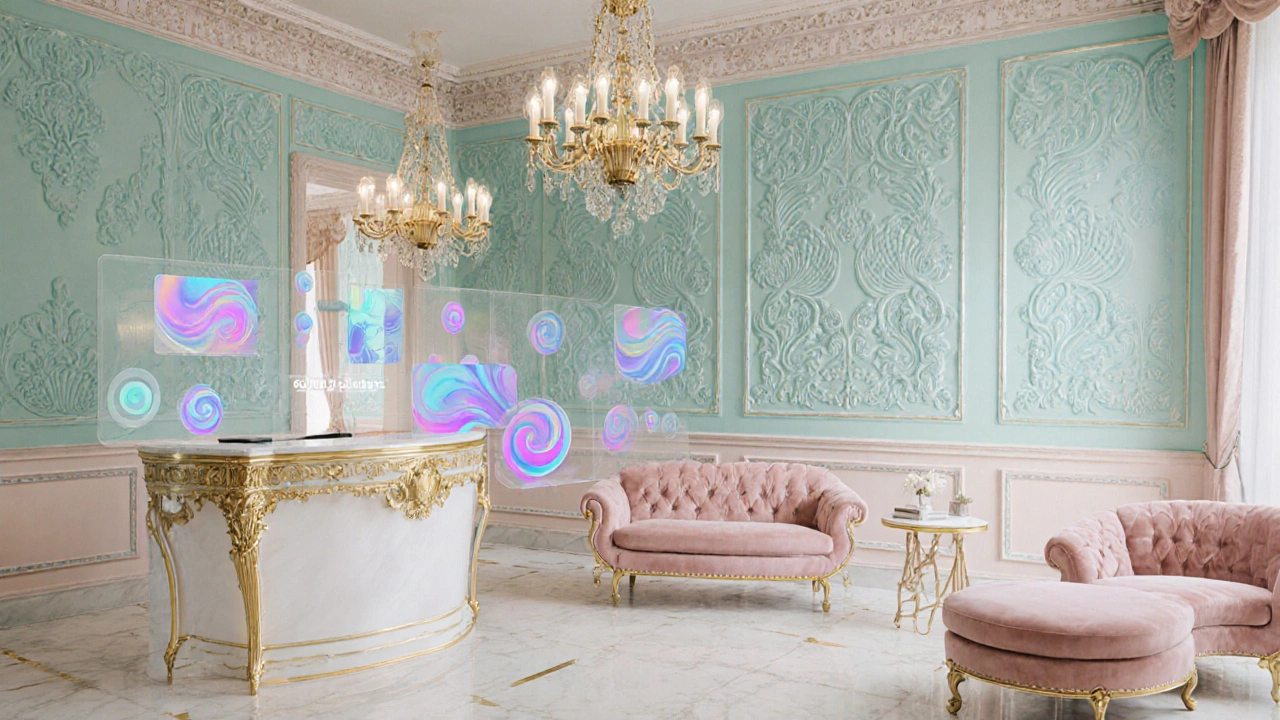
Rococo vs. Baroque vs. Neoclassicism
| Aspect | Baroque (1600‑1750) | Rococo (1730‑1775) | Neoclassicism (1760‑1820) |
|---|---|---|---|
| Core Mood | Drama, power, religious awe | Playfulness, intimacy, lightness | Order, rationality, civic virtue |
| Color Palette | Rich reds, deep golds, chiaroscuro | Pastels: pink, sky‑blue, ivory | Muted earth tones, white marble |
| Form | Symmetrical, monumental, heavy ornament | Asymmetrical, curvilinear, airy ornament | Straight lines, Greek‑Roman columns |
| Typical Subjects | Religious epics, heroic battles | Mythical flirtations, garden parties | Classical history, moral narratives |
| Key Patrons | Catholic Church, absolute monarchs | French aristocracy, Louis XV, Madame de Pompadour | Enlightened elites, post‑revolutionary governments |
The table shows how Rococo sits neatly between the drama of Baroque and the disciplined classicism that followed. By the 1770s, philosophers like Diderot and architects such as Jacques-Louis David pushed the pendulum toward Neoclassicism, deeming Rococo frivolous and out of step with Enlightenment ideals.
Legacy and Modern Resonance
Although the French Revolution dismantled the aristocratic world that birthed Rococo, the style never fully disappeared. The 19th‑century Romantic movement revived its softer aesthetics, and designers in the 1960s and 2000s turned to Rococo motifs for boutique hotels and luxury boutiques seeking a “retro‑opulent” vibe.
Today, interior designers borrow the pastel palette and curvilinear furniture in upscale apartments, while fashion houses echo its decorative excess on runway fabrics. Even digital UI designers use Rococo‑inspired gradients and fluid shapes to create playful interfaces that feel both historic and contemporary.
In short, Rococo art informs more than just museum walls; it lives in the way we balance elegance with comfort, and how we let a space feel intimate without losing grandeur.
Frequently Asked Questions
What time period does Rococo cover?
Rococo flourished roughly between 1730 and 1775, peaking during the reign of Louis XV and tapering off as Neoclassicism rose in the late 1770s.
How does Rococo differ from Baroque?
Baroque emphasizes drama, power, and heavy ornamentation, while Rococo opts for lightness, asymmetry, pastel colours, and playful scenes.
Who were the most influential Rococo artists?
François Boucher, Jean‑Honoré Fragonard, and Antoine Watteau are often cited as the movement’s leading painters. In decorative arts, cabinetmakers like Jean-François Oeben also played a major role.
Can Rococo be seen outside France?
Yes. The style spread to Germany, Austria, Italy, and even the United States, influencing palaces such as the Amalienburg in Munich and the Founders Hall in Williamsburg, Virginia.
Why did Rococo fall out of favour?
The Enlightenment’s call for rationality and the political upheaval of the French Revolution made the style’s frivolous, aristocratic excess seem out of step, paving the way for the austere Neoclassical aesthetic.

